PCIe slots can be occupied with numerous kinds of expansion cards/add-in cards. Graphics cards are one of the most common devices you plug into PCIe slots. You can also add network cards, SSD expansion cards, sound cards, storage controller cards, RAID controllers, video capture cards, TV tuner cards, and Risers cards to the PCIe slots.
As you can see, the PCIe slot is very versatile. It can accommodate a wide range of components to design your system to your liking.
You may want to install a Graphics card if you are a gamer. If you are building a NAS setup, you may want to add storage controllers and more SATA ports. If you are missing network capability on your PC, you can add a network adapter, and if you are an audiophile, you can add a high-end dedicated sound card to the PCIe slot.
The possibilities of what you can add are vast, and in this article, we will go through various devices to understand what things can be plugged into PCIe slots and their functions.
TABLE OF CONTENTS
How is Expansion Done on Motherboards?
There are two protocols that you commonly use to add components to your motherboard.
- SATA
- PCIe
SATA is a protocol generally used to connect hard disk drives, SATA SSDs, and optical drives.
On the other hand, PCIe is a protocol used to connect High-Speed Input/Output devices (HSIO). These are devices that have a high bandwidth requirement.
SATA protocol at the moment, with its version 3.0, caps at about 750 MB/s (6Gbps) bandwidth.
PCIe, on the other hand, is multiple folds faster than this. The PCIe x16 slot conforming to PCIe v4.0 has a bandwidth of about 31.5 GB/s. A single lane PCIe x1 v4.0 slot has a capacity almost three times as much as a SATA 3 slot, i.e., 1.969 GB/s or 1969 MB/s on a single PCIe v4.0 lane vs. 600MB/s on SATA 3.
| Version | x1 (GB/s) | x2 (GB/s) | x4 (GB/s) | x8 (GB/s) | x16 (GB/s) |
|---|---|---|---|---|---|
| 1.0 | 0.250 | 0.500 | 1.000 | 2.000 | 4.000 |
| 2.0 | 0.500 | 1.000 | 2.000 | 4.000 | 8.000 |
| 3.0 | 0.985 | 1.969 | 3.938 | 7.877 | 15.754 |
| 4.0 | 1.969 | 3.938 | 7.877 | 15.754 | 31.508 |
| 5.0 | 3.938 | 7.877 | 15.754 | 31.508 | 63.015 |
| 6.0 | 7.877 | 15.754 | 31.508 | 63.015 | 126.031 |
The point is that PCIe slots plugin demanding and specialized components.
Also Read: How Much is a Motherboard?
There are Different Sizes of PCIe Slots
PCIe expansion cards have different lane and slot requirements. As such, there are different sizes of PCIe slots.
The most common slots are as follows:
- x16 – This slot has 16 PCIe lanes – Used for cards that require high bandwidth, like graphics cards; this is the largest slot on the motherboard.
- x8 – This slot has the same size as an x16 slot but has half the PCIe lanes. This is also commonly used for graphics cards or M.2 NVMe SSD expansion cards.
- x4 – This slot has four PCIe lanes and is the same size as an x16 slot. It is often used for a single M.2 NVMe SSD expansion card. It is also used for SATA 3 expansion cards and raid controllers, high-speed 10G network adapters, and 4k video capture cards.
- x1 – Smallest expansion slot – suitable for almost any other cards like a sound card, average 1G network adapters (i.e., wireless cards), FHD video capture cards, USB expansion cards, etc.
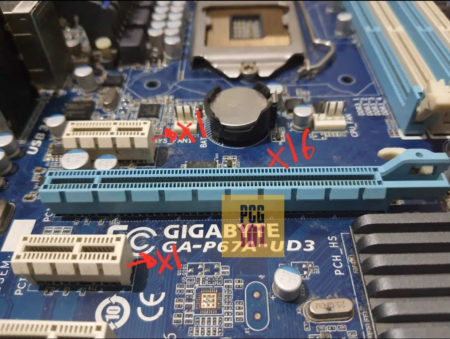
Image: The blue x16 slots are the longest found on commercial motherboards. They are mainly occupied with graphic cards. The smaller X1 cards are for low-powered cards like wireless network cards.
Brushing up your knowledge on PCIe lanes, versions, and slots is recommended to understand the topic better.
Read:
Let’s Look at What Things Can Be Plugged into PCIe Slots
The following are some of the most common devices that you can add to the PCIe slots:
- Graphics Cards
- Sound Cards
- Ethernet Network Cards
- Wireless + Bluetooth Network Cards
- Video Capture Cards
- SATA Expansion and RAID Controller Cards
- M.2 NVMe Expansion Cards
- TV Tuner Cards
- Port Expansion Cards
- Riser / Splitters
1. Graphics Cards (GPUs)
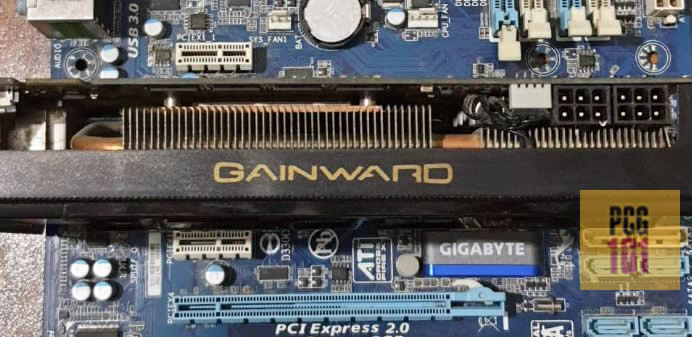
One of the most common peripherals installed on a PCIe slot is a DEDICATED graphics card – the processing module that allows all the visuals you see on the screen to be painted. This is a device particularly of interest to gamers and crypto miners.
Many CPUs come with an INTEGRATED graphics card. These are pretty simple and can suffice for average users.
For advanced users like gamers, designers, and simulators, beefier DEDICATED graphics cards are needed.
Graphics cards are significant investments for any enthusiast PC builder.
In the case of a desktop, the only way to add a dedicated graphics card is via a PCIe x16 slot. Most graphics cards are designed to utilize 16 PCIe lanes, and thus they require the full PCIe x16 slot to function at their best capacity.
Note on Integrated (iGPU) vs. Dedicated Graphics Card
As mentioned iGPUs are built into the CPUs. These are good enough for an average user. Dedicated graphics cards are standalone devices designed by NVIDIA or AMD that plug into the PCIe slots on your motherboard.
2. Sound Cards
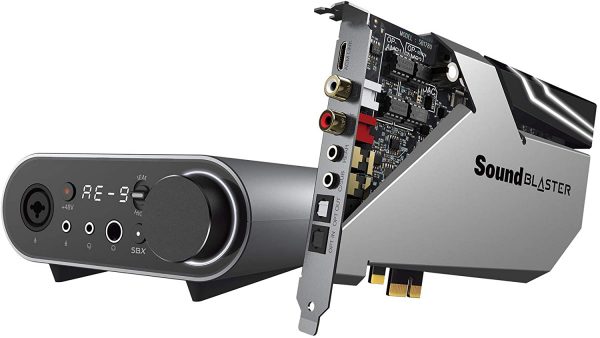
Image: Creative Blaster AE-9 internal sound card. One of the most advanced and expensive internal sound cards.
Computers can process sound native to the system, as all motherboards have a built-in sound processing chip.
But in the case of creators, gamers, enthusiasts, or professionals who need a higher grade of sound output, investing in a sound card is the next logical step.
These can add better audio ports and quality to your system and even increase audio channel support. Another advantage is the reduction of interference which can distort sound quality or lead to noise.
While a dedicated sound card, as shown above, is not a match for professional audio systems and interfaces, it can be great for audiophiles and intermediate audio producers.
Sound cards require a PCIe x1 slot.
3. Ethernet Network Cards
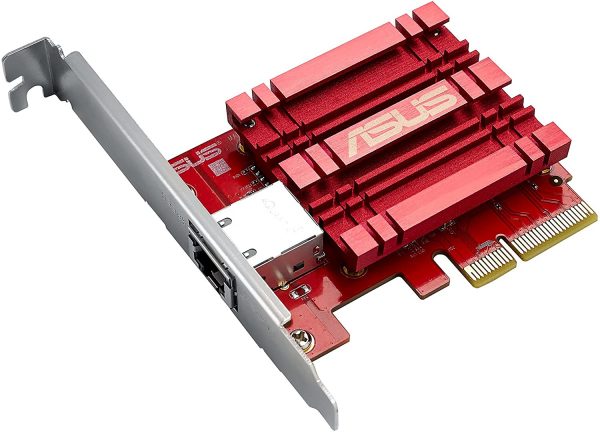
While most motherboards come with Ethernet support, this could be missing in some older ones. Hence this could warrant an investment in Ethernet network adapters.
You can only get an average gigabit network speed on bare mainstream boards. You can even have 10G or faster speeds with dedicated PCIe network cards.
The ASUS XG-C100C above is a high-speed 10G, or 10 Gbps, network card that requires an X4 slot (v3.0). Weaker Gigabit, or 1 Gbps, network cards only require an x1 slot (v3.0).
4. WiFi + Bluetooth Network Cards
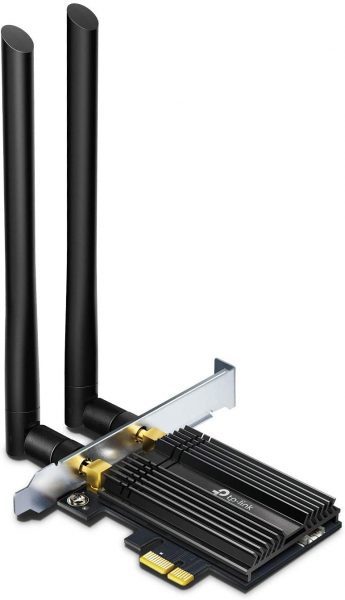
In addition to Ethernet network cards, you get network cards that can add WiFi + Bluetooth functionality to your PC.
Even conforming to the newer WiFi 6 protocol, a WiFi Network card requires only an X1 slot.
Also Read: Do Motherboards Come with WiFi?
5. Video Capture Cards – AKA Game Capture Card
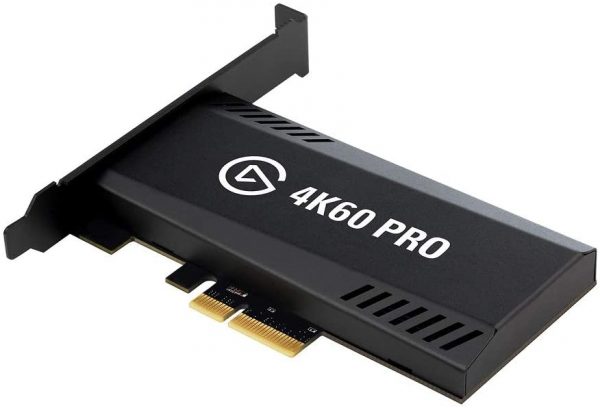
Image: Elgato 4k 60Hz video capture card requires an x4 PCIe slot.
Video Capture cards are used for recording the content on the screen. They can also stream the same content to viewers over the internet.
These can come in handy for online game streamers and entertainers and are particularly good for those who build a dedicated streaming PC or have a gaming console.
Other than gamers and streamers, these are also used by content creators and vloggers.
Essentially, a video capture card helps in encoding the raw footage into data that a computer can understand. This can then be edited or streamed.
An FHD PCIe video capture cards require an x1 slot. However, 4K video capture cards require more PCIe bandwidth and thus require an x4 slot.
6. SATA Expansion and RAID Controller Cards
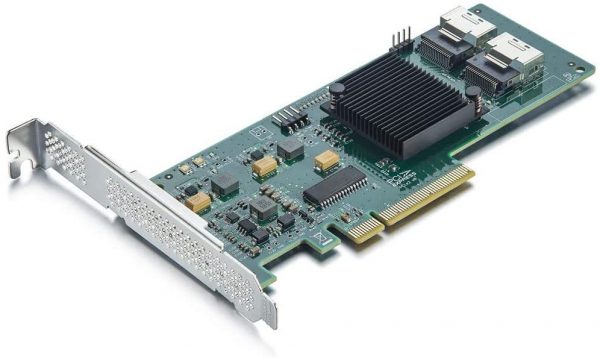
Image: While most SATA expansion cards are simple, the 10Gtek SAS 9211-8I is an advanced RAID controller with 8 SATA port capacities. Note that this has SAS connectors. You will need a SAS to 4-SATA ports cable to have 8 SATA ports available.
PCIe slots can also be used to increase the storage capacity of your system. You can get a PCIe SATA expansion card with limited SATA 3 ports on your motherboard for connecting SATA hard drives.
The size of the SATA expansion card and the type of slot it requires depends on factors like how many SATA slots it has and whether it has a RAID controller.
You can find SATA 3 expansion cards for x1, x4, and x8 slots.
7. M.2 NVMe Expansion Cards
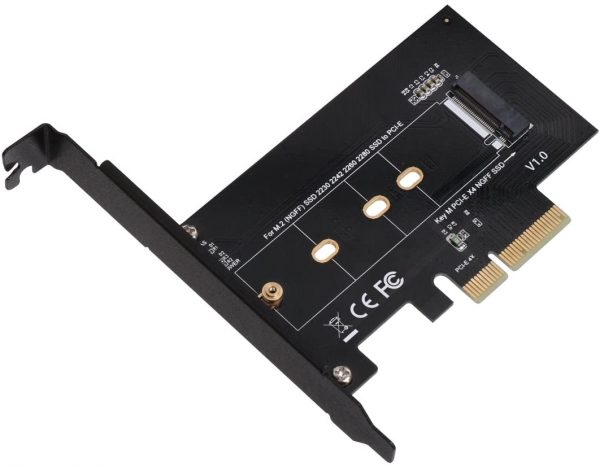
Image: NVMe expansion card. Offers a single M.2 NVMe slot and occupies x4 PCIe slot.
PCIe NVMe SSD is the fastest hard drive available. An average SATA 3 spinning hard disk drive can reach only 200 MB/s in ideal conditions.
A PCIe NVMe SSD can reach speeds of up to 7000/5100 (Read/Write) MB/s, such as the Samsung 980 Pro. This is many folds faster than an average hard drive.
Many newer motherboards do come with at least one NVMe M.2 slot. However, if your motherboard lacks the M.2 slot or you want to add another NVMe SSD to your system, you can invest in an NVMe SSD expansion card.
Note that each M.2 NVMe slot requires 4 PCIe lanes. As such, the smallest card you can find requires an x4 PCIe slot.
8. TV Tuner Cards
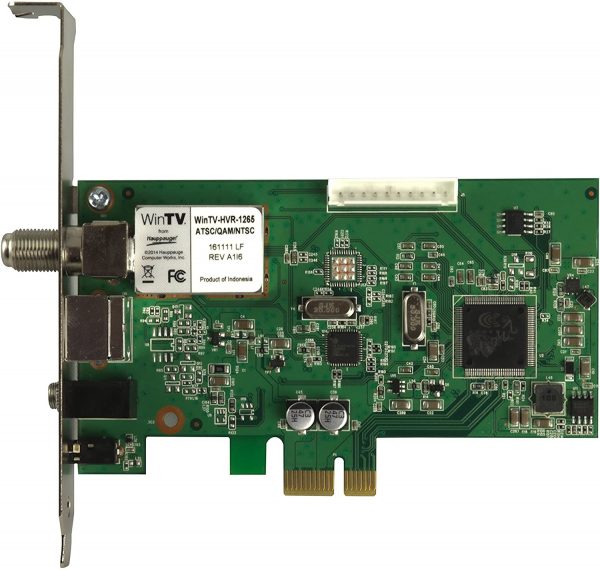
Image: Hauppauge 1196 TV Tuner Card
Up next on the list of what things can be plugged into PCIe slots is a TV Tuner card. Simply put, TV Tuner cards let your PC work like a TV. They allow it to receive TV signals, decode them directly, and show you TV channels.
These cards are relatively inexpensive and can come in handy in various situations. Some can be plugged in via USB, but many connect directly to the motherboard via PCIe ports.
These require a PCIe x1 slot.
9. Port Expansion Cards – Thunderbolt, USB
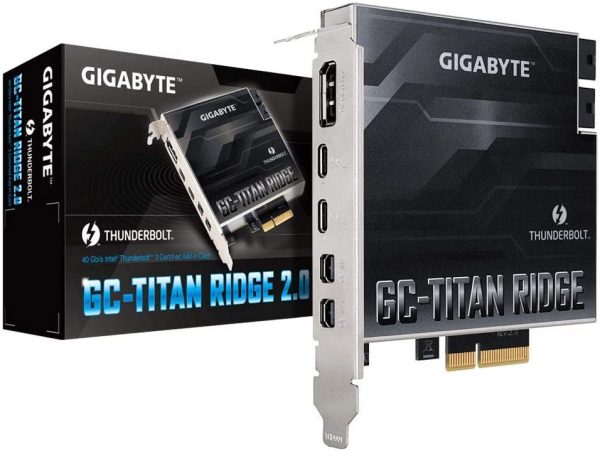
Image: Gigabyte GC-Titan Ridge 2.0 Thunderbolt 3.0 expansion card.
If you want more IO on your PC, a PCIe port expansion card is the way to go.
Whether you want to add more USB Type-A ports, a newer Type-C port, or even a Thunderbolt 3.0 port to your PC, you can do so with port expansion cards.
It should be noted that you NEED TO HAVE THE RIGHT HEADER TO ADD THE CORRESPONDING PORT EXPANSION CARD. For instance, to add a Thunderbolt 3.0 expansion card like the one shown above, your motherboard needs to have a Thunderbolt 3.0 header.
Depending upon the amount and type of port, these cards require an x1 or x4 PCIe slot.
10. Riser Cards
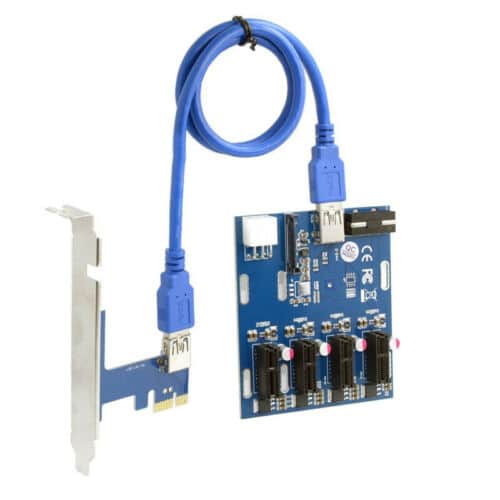
Riser cards are essentially PCIe port splitters. Like port expansion cards, PCIe riser cards add extra ports to your PC. Only the ports they add are PCIe.
Caution: MORE PCIE SLOTS DOES NOT EQUAL MORE PCIE LANES OR HIGHER BANDWIDTH. To learn how to add more PCIe slots, follow this article:
Riser cards are trendy among crypto miners and for creating crypto mining rigs with multiple graphics cards.
Summary of Expansion Cards and Their PCIe Lane Requirements
| Card | PCIe Lane Requirement | Remarks |
|---|---|---|
| NVIDIA Graphics Card | 16 or 8 | 16 ideally 8 in case of SLI |
| AMD Graphics Card | 16, 8, or 4 | 16 ideally 8 or 4 in case of crossfire |
| Sounds Card | 1 | |
| Ethernet Network Card | 1 or 4 | 1 in case of 1 Gbps (v3.0) 4 in case of 10 Gbps (v3.0) |
| WiFi Network Card | 1 | |
| Video Capture Card | 1 or 4 | 1 in case of 1080 capture (v3.0) 4 in case of 4k capture (v3.0) |
| SATA Expansion and Raid Controller | 1, 4, 8 | The lane requirement depends upon number of SATA slots, and whether it has RAID Controller |
| M.2 NVMe Expansion Card | 4 | |
| TV Tuner Cards | 1 | |
| Port Expansion Card | 1 or 4 | Depending upon the type and number of port. Thunderbolt 3.0 port, for instance, requires 4 PCIe Lanes (v3.0) |
| Riser/Splitter | 1, 4, 8, 16 |
Cross and Backward Compatibility
The PCIe standard is cross-compatible, meaning an x4 card can be installed in an x16 slot – but you should refrain from doing this unless necessary otherwise, you will be wasting your precious x16 slot on a smaller card.
The PCIe standard is backward compatible, so an older PCIe card operating on PCIe 2.0 standard will fit in a PCIe 3.0 slot. However, the interface only works at the maximum speed of the slower of the two.
Final Words
Here I talked in detail about some of the most common devices that can be plugged into a PCIe slot. It would be best if you learned what PCIe slots and lanes are.
You see, each PCIe device requires a certain amount of PCIe lanes, but the amount of PCIe lanes you have in your system is limited. In my blog here, I have talked in detail about PCIe lanes. So ensure you are well versed with the concept if you plan to build your PC or install a new device.
FREQUENTLY ASKED QUESTIONS
1. Are there any restrictions or limitations on the types of devices or components that can be plugged into a PCIe slot, such as compatibility or power requirements?
PCIe slots have certain requirements for power and compatibility, and not all devices or components will work in all PCIe slots.
The speed and configuration of the PCIe slot, as well as the power delivery and requirements of the device or component, must be compatible in order for it to work properly.
Additionally, some motherboards may have specific requirements or limitations on the number and types of devices that can be plugged into PCIe slots.
2. What are some of the latest or most innovative devices or components that can be plugged into PCIe slots, and what benefits do they offer?
Some of the latest and most innovative devices or components that can be plugged into PCIe slots include high-speed network adapters, solid-state drives, graphics processing units (GPUs) for gaming or professional use, and sound cards.
These devices offer improved performance and functionality compared to traditional components, and can help to enhance the overall capabilities of a computer system.
3. Can PCIe slots be used for purposes other than expansion, such as additional power or cooling options?
While PCIe slots are primarily designed for expansion purposes, there are some additional power and cooling options that can be enabled using PCIe-based devices.
For example, some motherboards may support PCIe-based fan or pump controllers, which can help to regulate the temperature and performance of the system.
Additionally, some power supply units (PSUs) may offer PCIe-based power cables, which can provide additional power capacity to the system.
4. How do I troubleshoot issues or problems related to devices or components that are plugged into PCIe slots, such as driver conflicts or hardware malfunctions?
Troubleshooting issues related to devices or components that are plugged into PCIe slots can be challenging, but there are a few things to keep in mind.
First, make sure that the device or component is properly seated in the PCIe slot, and that all necessary power and data connections are properly configured.
You should also check the compatibility and driver requirements for the device or component, and ensure that you are using the correct settings and configurations in your system.
If you are still experiencing issues, you may need to consult the documentation or user manual for the device or component, or seek assistance from a professional technician or support service.

I have a x4 pcie SSD nvme m.2 expansion card and a x1 pcie wifi card.
the slots available are pcie x8 slot No2 and pcie x16 slot No2
The 3 No Pcie x1 slots for some reason are unreliable when plugging in the wifi card. (Does not always work)
The GTX 1080 Graphic card occupies Pcie x16 Slot No1 covers up the Pcie x8 slot No1 so I cant use this.
My question is What would be better
a. Plugging the x4 pcie SSD nvme m.2 expansion card into the x16 Pcie slot No2 and the Wifi Card into the x8 Pcie slot No2. or the other way around ??
Hi, can you tell me the make and model of your motherboard. Thatll help me understand the situation better